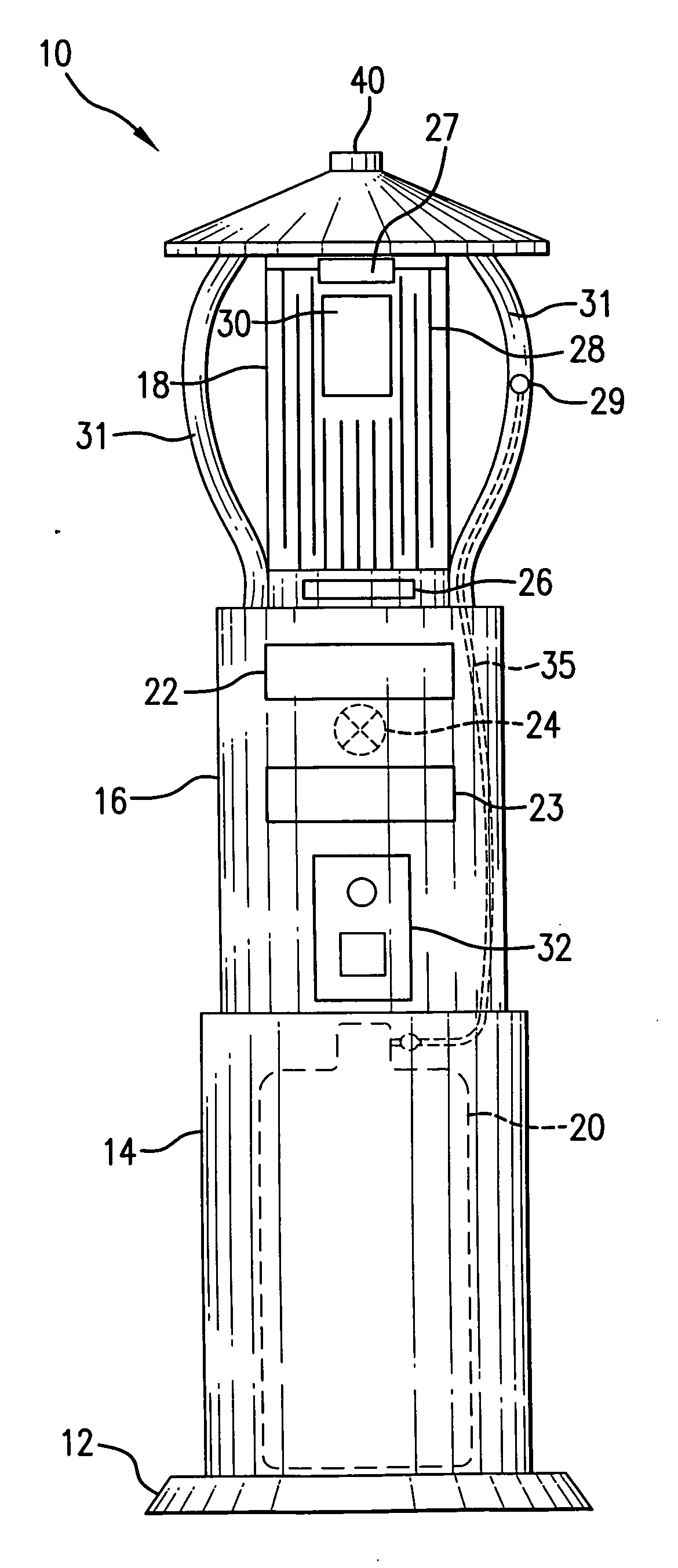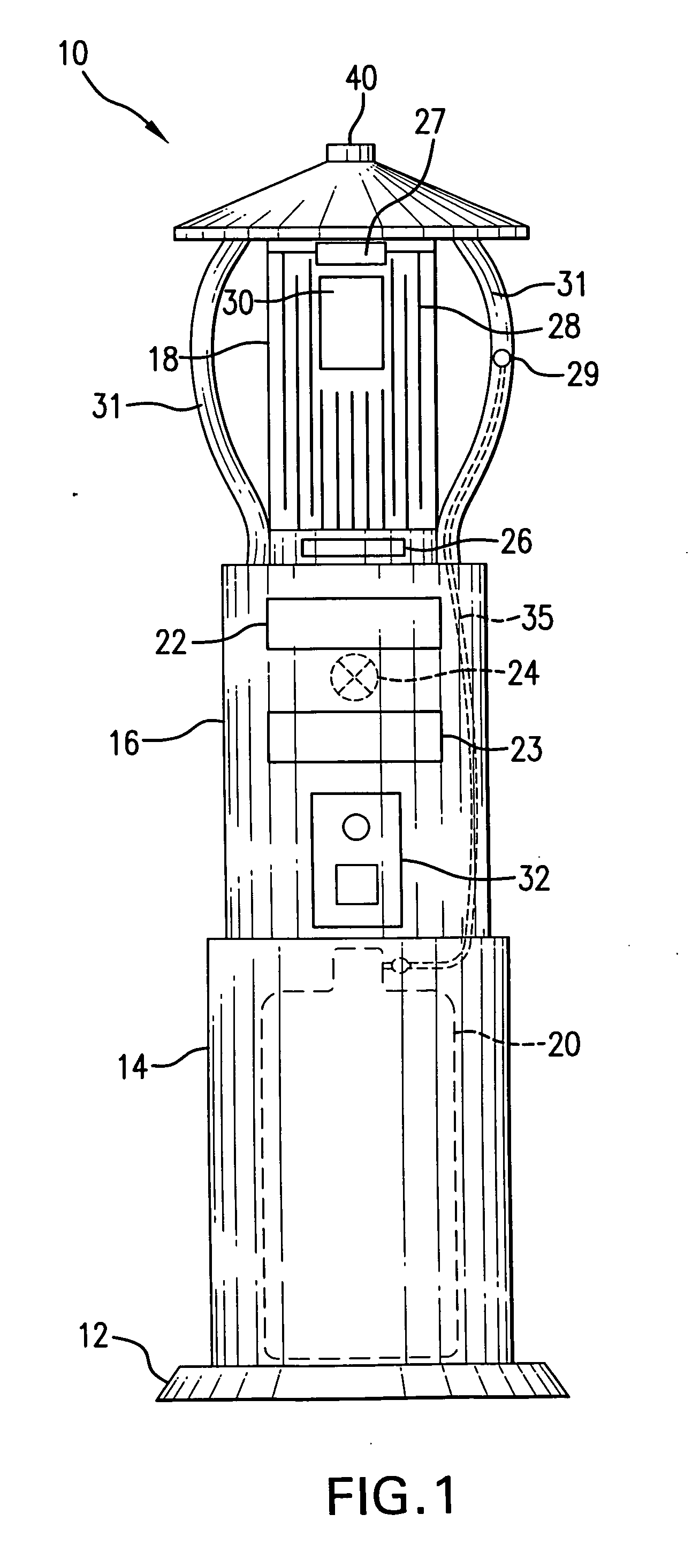Biting insect trap
a technology for insects and traps, applied in the field of insect traps, can solve the problems of ineffective devices utilizing ultraviolet light sources, ineffective attracting biting insects such as mosquitoes and flies, and preying on humans and livestock, and prior art devices utilizing pheromones as odor sources to attract specific types of insects are expensiv
- Summary
- Abstract
- Description
- Claims
- Application Information
AI Technical Summary
Benefits of technology
Problems solved by technology
Method used
Image
Examples
Embodiment Construction
[0012]As indicated above, the present invention is a biting insect trap for attracting and eliminating flying biting insects that is safe and does not employ grids with high electric current or burning flammable materials. The present inventors have developed a trap for biting insects that includes, among other things, a source of carbon dioxide, a heating element that mimics the arteries and veins of a mammal, and one or more chemical attractants. The carbon dioxide, heating element, and chemical attractants work in concert to attract flying biting insects such as mosquitoes and other pests. Moreover, the present invention collects these flying biting insects by sucking them into a collection vessel with the aid of an induction fan. This feature offers advantages over electrified grids or the burning of propane utilized in devices in the prior art in terms of safety and economy.
[0013]Accordingly, the present invention is directed to a biting insect trap, comprising a base; a lower ...
PUM
 Login to View More
Login to View More Abstract
Description
Claims
Application Information
 Login to View More
Login to View More - R&D
- Intellectual Property
- Life Sciences
- Materials
- Tech Scout
- Unparalleled Data Quality
- Higher Quality Content
- 60% Fewer Hallucinations
Browse by: Latest US Patents, China's latest patents, Technical Efficacy Thesaurus, Application Domain, Technology Topic, Popular Technical Reports.
© 2025 PatSnap. All rights reserved.Legal|Privacy policy|Modern Slavery Act Transparency Statement|Sitemap|About US| Contact US: help@patsnap.com


